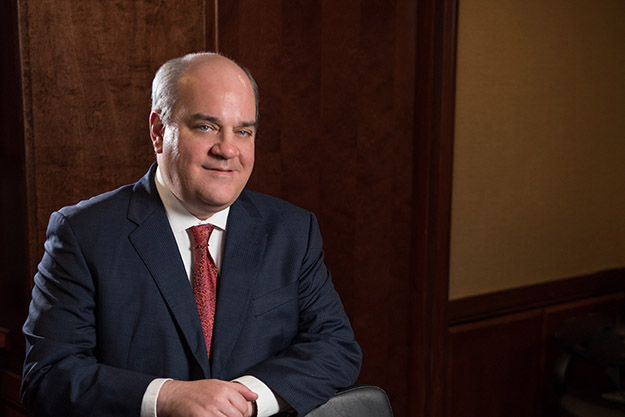Article
Resources
Article
Emergency Federal Leave is Now Reality. What Does It is Mean for Your Business?

As part of Spilman's and our COVID-19 Task Force's continuing effort to partner with you during this public health emergency, we’ve been monitoring Congress’ work on the Families First Coronavirus Response Act ("Act"). This now has passed both houses and all indications are that it will be effective within weeks. Even in its short history, the bill has seen some significant changes. This is the final form.
This bill contains a number of provisions, including requiring private health plans to provide coverage for COVID-19 diagnostic testing at no cost to the consumer and providing financial support for additional unemployment compensation. Of critical import to employers, however, are the two provisions addressing employee leave for reasons related to COVID-19. First, the Act mandates that most employers provide two weeks of paid sick leave for absences caused by COVID-19, in addition to any PTO already provided. Second, the Act provides additional FMLA rights for employees needing leave for childcare reasons. We’ll explore these in turn.
EMERGENCY PAID SICK LEAVE ACT
This provision of the Act requires most employers with more than one but fewer than 500 employees to provide all employees with up to two weeks of additional paid sick leave, paid at the employee’s regular rate, for medical reasons related to COVID-19. This leave is to be immediately available, but it is a one-time only grant – the right to the leave ends when the employee returns to work.
Employers may exclude individuals who are health care providers or emergency responders from this sick leave. The Department of Labor is authorized to, but has not yet, enacted regulations that would exclude employers with fewer than 50 employees “when the imposition of such requirements would jeopardize the viability of the business as a going concern.”
Paid leave for full-time employees is pay for 80 hours at the employee’s regular rate (up to $511 per day or $5,110 total), except mandatory paid sick leave is reduced to two-thirds of the employee’s pay when caring for a family member (up to $200 per day or $2,000 total). Part-time employees are to be paid for their average number of hours over a two-week period (subject to the same caps).
This leave is in addition to any paid leave already provided, but employers appear to be able to count paid leave voluntarily granted before the law was enacted against the employee’s emergency paid leave entitlement. The hours cannot be carried over after the end of the year (December 31, 2020, when the legislation sunsets), and there is no obligation to pay an employee for unused emergency paid sick leave when the employment relationship ends.
The emergency paid sick leave may be taken where the employee is unable to work (including telework) for the following reasons:
- Is in self-quarantine because of a COVID-19 diagnosis;
- Is seeking medical attention because of the symptoms of COVID-19;
- Is complying with an Order to Quarantine;
- Must care for a family member who is self-isolating because of COVID-19 or who has been quarantined because of COVID-19;
- Must care for a child where the child’s school or childcare has been closed due to COVID-19; or
- Is experiencing any other substantially similar condition.
EMERGENCY FAMILY AND MEDICAL LEAVE ACT
This provision also applies to most employers with fewer than 500 employees, though employers with fewer than 50 employees in a 75-mile radius may be exempt from FMLA damages.
The Emergency FMLA would allow any employee (full or part-time) who has been on the payroll for 30 days (as opposed to the 12-month and 1,250-hour requirement for most FML) to take Emergency FML for up to the full 12-week allotment where the employee is unable to work (including telework) and the employee must care for a child whose school has been closed, or where the childcare provider is unavailable, due to a public health emergency relating to COVID-19.
Again, employers may exclude individuals who are healthcare providers or emergency responders from this law, and employers with fewer than 50 employees cannot be sued for civil damages under the FMLA if they fail to provide this leave.
The first 10 days of this leave may be unpaid (but see the section earlier), though an employee can choose to substitute accrued vacation leave, personal leave, or other medical or sick leave during the leave. The employer cannot force an employee to use their accrued paid leave. After 10 days, employers must pay the Emergency FMLA leave at two-thirds the employee’s regular rate of pay for the number of hours the employee would have been normally scheduled, capped at $200 per day or a total of $10,000.
This leave is job-protected, as with traditional FMLA leave, so employers must return the employee to the employee’s same or equivalent position upon return to work. There is an exception for small employers (fewer than 25 employees) if the employee’s position no longer exists due to economic conditions caused by the public health emergency. But, employers still must try to place the employee into an equivalent position, and, if that is not possible, must contact the displaced employee for up to a year about open positons.
Other key provisions:
- Employers cannot change their paid leave policies due to their obligations under this Act.
- Employers cannot require an employee to search for or find a replacement to cover their hours.
- Employers cannot require an employee to use other paid leave before the employee uses the emergency paid sick time under the Act.
- Employers are prohibited from retaliating against their employees for seeking leave under of these provisions and are required to post the requirements of this Act (the DOL is providing a model notice within seven days of the Act’s passage.)
So, how are employers expected to pay for this? The Act provides that employers can claim a tax credit for 100 percent of any wages paid pursuant to the Act (subject to daily or quarterly caps), against the tax imposed by section 3111(a) (the employer portion of social security taxes). If the credit exceeds the employer’s total liability under Section 3111(a) for all employees in any calendar quarter, the excess credit is refundable to the employer. You are encourage to call one of Spilman’s tax attorneys for information on claiming this tax credit if it is of interest to you.


